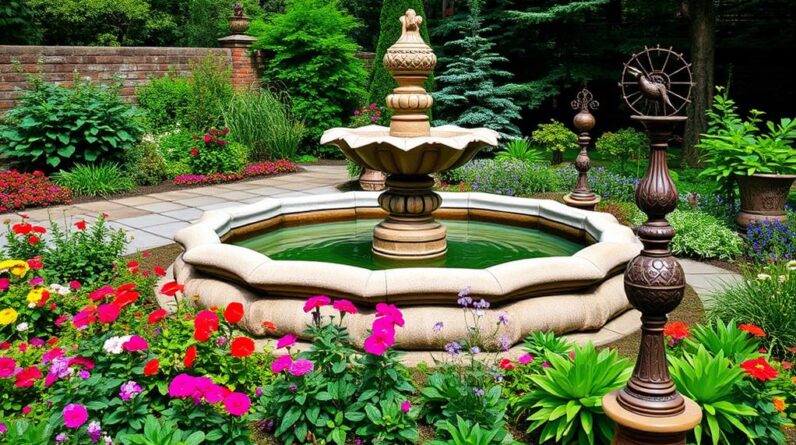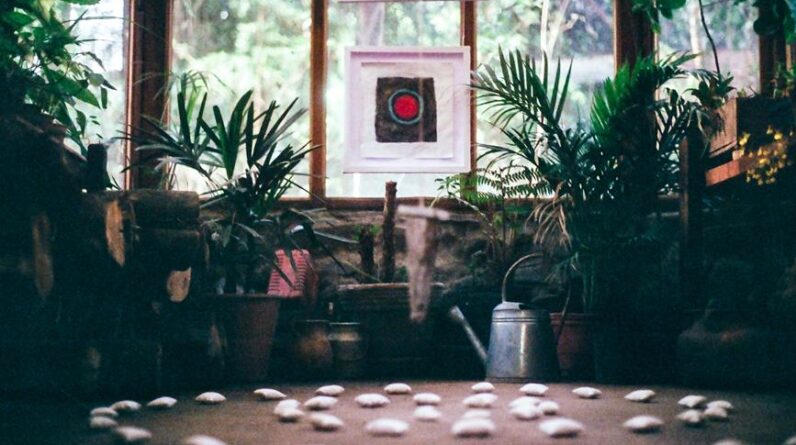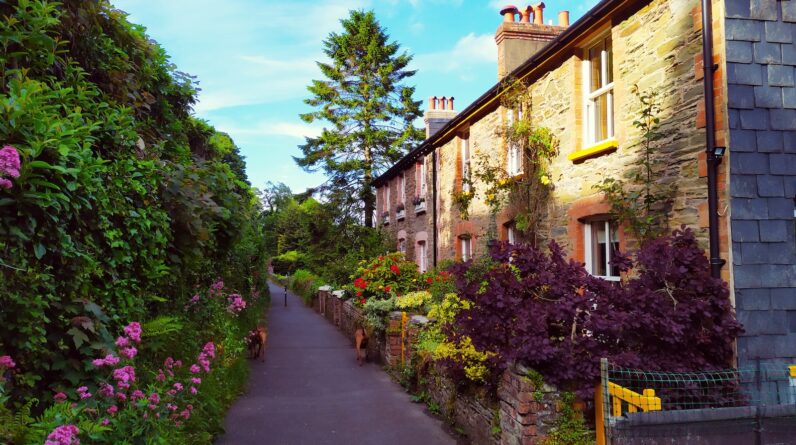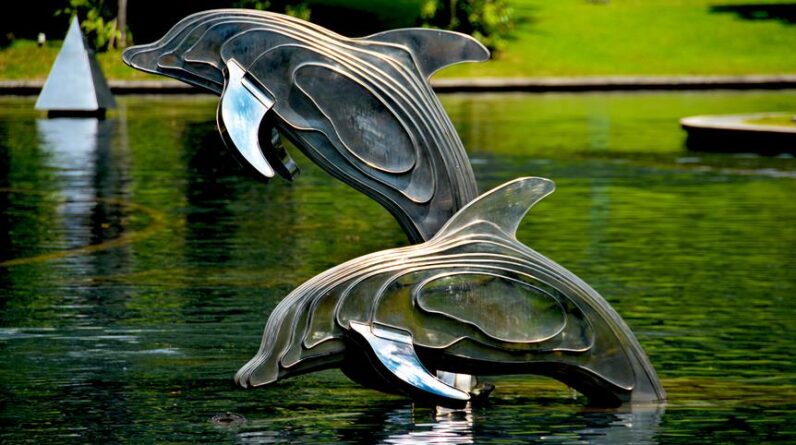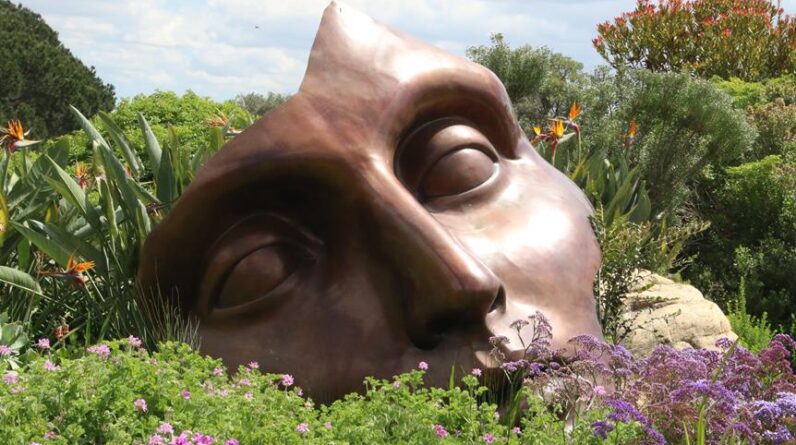
Imagine strolling through a vibrant garden, where every step reveals a new masterpiece. A place where art and nature intertwine, creating an enchanting experience that awakens your senses.
Welcome to the world of designing a sculpture garden. In this article, we will delve into the benefits of incorporating art into the natural landscape, selecting the perfect sculptures, and enhancing the atmosphere with artistic elements.
Get ready to embark on a journey of creativity and innovation, as we explore the realm of art in nature.
Key Takeaways
- Art in nature has the power to evoke emotions and inspire creativity.
- Carefully selecting sculptures and materials creates an innovative and captivating outdoor art space.
- Strategically place sculptures to create a harmonious relationship between art and nature.
- Implementing artistic elements transforms the sculpture garden into an immersive and enchanting space.
The Benefits of Art in Nature
You'll be amazed by the numerous benefits of incorporating art into nature.
The healing power of nature is undeniable, and when combined with artistic elements, it creates a truly transformative experience.
Art in nature has the ability to evoke emotions, inspire creativity, and provide a sense of tranquility and peace.
By integrating sculptures, paintings, and installations into natural landscapes, we not only enhance the beauty of the environment but also promote environmental awareness.
These artistic creations serve as a reminder of the importance of preserving and protecting our natural surroundings.
They encourage visitors to appreciate the wonders of nature and spark a desire to take action in conserving our planet.
Art in nature is a powerful tool for connecting people to the environment and fostering a sense of responsibility towards our planet's well-being.
Selecting the Perfect Sculptures for Your Garden
Finding sculptures that complement your garden's aesthetic and enhance its natural beauty is an exciting and rewarding process. When selecting sculptures for your garden, it's important to consider both the sculpture's placement and the materials used.
Sculpture placement plays a crucial role in creating a harmonious atmosphere. Consider the scale and proportion of the sculpture in relation to the surrounding landscape. A larger sculpture can act as a focal point, drawing attention and creating a sense of drama, while smaller sculptures can be scattered throughout the garden to create visual interest.
Additionally, consider the materials of the sculptures. Natural materials like stone or wood can blend seamlessly with the natural surroundings, while metal or glass sculptures can add a contemporary touch.
By carefully selecting sculptures that align with your garden's aesthetic and utilizing appropriate materials, you can create a truly innovative and captivating outdoor art space.
This leads us to the next section, where we'll explore the process of incorporating sculptures into the natural landscape.
Incorporating Sculptures Into the Natural Landscape
To seamlessly blend sculptures into your natural landscape, consider the placement and integration of the artwork with the surrounding environment. It is crucial to select sculptures that complement the existing landscape and enhance the overall aesthetic appeal. By strategically placing sculptures in specific locations, you can create a harmonious relationship between art and nature. The environmental impact of incorporating sculptures into the natural landscape should also be taken into account. Use environmentally friendly materials and ensure that the sculptures do not disrupt the ecosystem or alter the natural habitat. Balancing the artistic vision with environmental considerations will result in a sculpture garden that not only captivates the viewers but also respects and celebrates the beauty of the natural world.
| Sculpture Placement | Environmental Impact |
|---|---|
| Integrate sculptures into natural features such as rocks or trees | Choose materials that are eco-friendly and sustainable |
| Position sculptures to take advantage of natural light and shadows | Avoid disrupting the ecosystem or altering the natural habitat |
| Consider the viewpoint of the viewer and the surrounding landscape | Minimize the use of resources such as water or electricity |
| Create a sense of flow and movement by placing sculptures along pathways | Encourage appreciation and respect for the natural world |
Enhancing the Atmosphere With Artistic Elements
How can artistic elements be used to enhance the atmosphere of a sculpture garden?
By incorporating various artistic elements, you can improve the ambiance and create focal points that captivate the audience. Here are three innovative ways to achieve this:
- Lighting: Strategically placed lights can highlight specific sculptures, creating a dramatic effect as the sun sets. Imagine a softly illuminated sculpture casting intriguing shadows, drawing visitors in for a closer look.
- Water Features: Adding water elements like fountains or ponds can provide a soothing backdrop to the sculptures. The sound of trickling water and the reflections dancing on the surface create a serene atmosphere, encouraging visitors to linger and contemplate.
- Pathways and Landscaping: Thoughtfully designed pathways and landscaping can guide visitors through the garden, leading them to discover sculptures in unexpected places. Incorporating elements such as colorful flowers, textured plants, and strategically placed seating areas can further enhance the overall experience.
By implementing these artistic elements, you can transform your sculpture garden into an immersive and enchanting space that stimulates the senses.
Now, let's explore how to maintain and preserve your sculpture garden for years to come.
Maintaining and Preserving Your Sculpture Garden
To ensure the longevity and beauty of your sculpture garden, you must regularly inspect and maintain the sculptures, as well as implement preservation techniques.
Preservation techniques are essential for protecting your sculptures from the natural elements and ensuring their longevity. One effective technique is applying a protective coating to the sculptures, which can help prevent damage from UV rays and moisture.
Additionally, regular cleaning is crucial to remove dirt, debris, and any potential pollutants that may harm the sculptures over time.
It's also important to monitor the garden's surrounding environment, such as the soil quality and drainage, to prevent any potential damage to the sculptures.
Frequently Asked Questions
How Can I Protect My Sculptures From Weather Damage in an Outdoor Sculpture Garden?
To protect your sculptures from weather damage in an outdoor sculpture garden, you should implement protective measures and maintenance techniques. This ensures their longevity and preserves their artistic integrity in the face of environmental challenges.
Are There Any Specific Materials That Are More Suitable for Sculptures in a Natural Landscape?
When considering suitable materials for sculptures in a natural landscape, it's important to prioritize sustainability and harmony with the environment. Choosing materials like stone or wood can minimize the impact on the local ecosystem while adding a touch of organic beauty.
Is It Necessary to Hire a Professional Artist to Create Sculptures for My Garden, or Can I Purchase Pre-Made Ones?
You have the choice between pre-made or custom sculptures for your garden. While purchasing pre-made ones might be more convenient, hiring a professional artist can bring a unique touch and elevate the artistic value. Consider the cost and your desire for innovation.
Can Sculptures in a Garden Attract Wildlife or Have Any Impact on the Local Ecosystem?
Incorporating sculptures in your garden can have a significant impact on wildlife and the local ecosystem. Not only do they attract diverse species, but they also provide benefits such as shelter and perching spots.
Are There Any Legal Regulations or Permits Required for Installing Sculptures in a Public Sculpture Garden?
Installing sculptures in a public sculpture garden may require legal regulations and permits. These requirements ensure that the outdoor sculptures are properly installed, weather protected, made of suitable materials, and created by professional artists.
Conclusion
In conclusion, creating a sculpture garden in nature is a transformative experience that elevates the beauty and atmosphere of any outdoor space.
The presence of art in nature not only enhances the visual appeal but also provides a sense of tranquility and inspiration. By carefully selecting sculptures that harmonize with the natural landscape and incorporating artistic elements, you can create a captivating and immersive environment.
So go ahead and embrace the power of art in nature to create a truly extraordinary outdoor haven.

